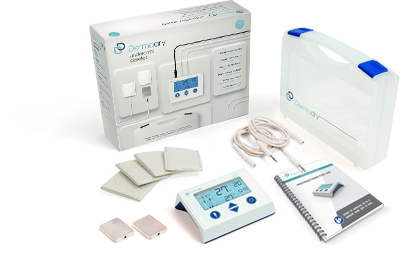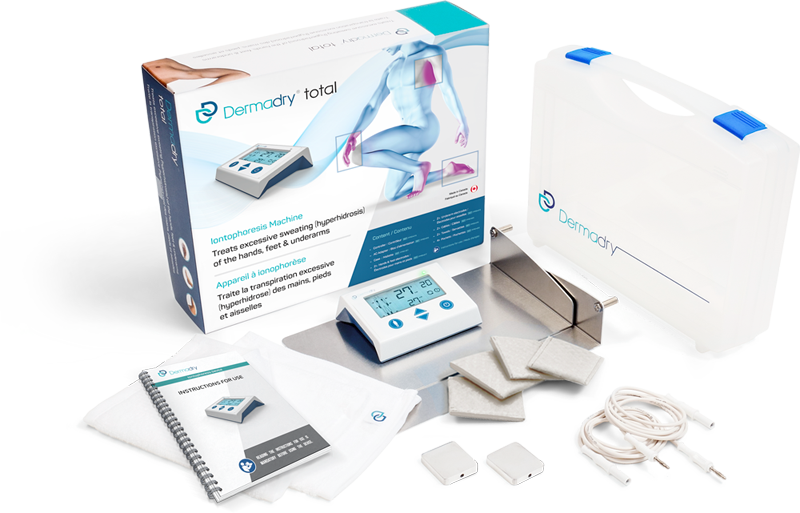Interview with Hyperhidrosis Expert Dr. Antranik Benohanian, MD
Dermadry Team
We spoke to Dr. Antranik Benohanian, MD, one of the leading medical experts in the diagnosis and treatment of hyperhidrosis worldwide. Based in Montreal, Canada, he has been treating and helping patients with hyperhidrosis since 1978. We asked him some questions about how he first developed an interest in hyperhidrosis and how he feels public perception of the condition has changed and evolved in the 42 years he’s been treating it.
Below you can read about the chance occurrence that led him to become the go-to physician for the diagnosis and treatment of primary focal hyperhidrosis. His unique expertise is based on decades of research and the treatment of thousands of hyperhidrosis patients. Read on to learn more about hyperhidrosis, treatment options, and what he hopes to see in the future in terms of education, awareness, and treatment for the condition.

Dr. Benohanian’s interest in hyperhidrosis began as a pure coincidence. Below he reflects on the event that launched his interest in the medical condition back in 1978.
“My involvement with hyperhidrosis (HH) began inadvertently on February 23rd, 1978, when I first met a 38-year-old female seeking advice for axillary HH for whom I did not have much to offer. The patient informed me that she failed to respond to Drysol and that she was already scheduled for surgery for the removal of her axillary sweat glands, and that she was also concerned about the ugly permanent scars that could result from such a procedure. As I had minimal knowledge about treating axillary HH, I told her to apply the Drysol, which she already had, under occlusion with a saran wrap, as recommended by most textbooks.
The patient came back on March 5th, 1978 to inform me that the occlusion did not improve her condition and she insisted on having a stronger preparation, despite being informed of the potential risk of further irritation.”
Again, pure coincidence kept Dr. Benohanian on the path of researching and diagnosing hyperhidrosis:
“By pure coincidence, I had met a pharmaceutical rep earlier that day who talked about an anti-acne medication containing 5% Salicylic Acid (SA) in a hydroalcoholic gel.”
Dr. Benohaninan soon learned that another Dermatologist was working on a gel to treat hyperhidrosis, which led him to work on his own formulations to treat his hyperhidrosis patients:
“Dr. Frederick Katz, a renowned Dermatologist affiliated to the Montreal General Hospital at that time, was adding 6% AC to Saligel, to enhance even further, its Anti-Acne effect. Inspired by Dr. Katz, I contemplated adding 20% AC to Saligel to enhance the antiperspirant effect. I called the pharmacy downstairs, which happened to be a compounding pharmacy and asked if the extemporaneous formulation would be feasible. As soon as I learned that the combination of AC 20 % was possible in Saligel, as a vehicle, I prescribed it to the patient after explaining to her that the preparation contains 2 ingredients that might help to reduce her sweating; but due to the additive effect of irritancy of both substances, I also prescribed a 1% HC cream to alleviate the burning sensation.
My rationale for choosing Saligel as a vehicle was that SA, a well-known penetration enhancer present in Saligel, could enhance the antiperspirant effect of AC, aside from having antiperspirant properties of its own.”
His efforts were rewarded when a hyperhidrosis patient of his reported that his solution had worked for her, which enabled her to cancel her upcoming highly-risky ETS surgery:
“To my pleasant surprise, an ecstatic patient called me the following day to notify me that not only the formula worked well, but that it was much better tolerated than Drysol 20%, despite the presence of the 2 strong irritants: AC and SA. Consequently, her planned surgery was canceled and her Surgeon, Dr. Claude Dupont, a plastic surgeon affiliated to Notre Dame Hospital, sent me all his similar cases scheduled for the same type of surgery.
By word of mouth, the number of patients referred for HH increased substantially and patients came to consult also for palmar, plantar, inguinal and craniofacial HH as well as bromhidrosis.
Since the treatment of palmar and plantar HH is more challenging than axillary HH because of the thick stratum corneum present on the palms of the hands and soles of the feet, I asked Yetvart Paylan, a compounding pharmacist if it would be possible to prepare higher concentrations of AC.
As the answer came back positive, I started to prescribe “supersaturated concentrations” of AC 30 and 40% in a 4 % SA gel and 55% in 6% SA gel, to control severe cases of palmar and plantar HH that would otherwise require Endoscopic Transthoracic Sympathectomy.”
As we’ve noted in many of our previous blogs, hyperhidrosis is a very misunderstood, underreported, and therefore undertreated condition. We asked Dr. Benohanian how he thought hyperhidrosis research and understanding had evolved since he first started treating patients in 1978. Below, he reflects on how hyperhidrosis has been perceived in the past, and how it’s changed in recent years, particularly since the advent of the internet.
Unfortunately, Focal HH (localized sweating under the arms, hands, feet, face, scalp and sometimes groin) has been a neglected subject in the medical literature. Patients used to suffer in silence and were embarrassed to talk about it even to their closest family members and friends. The great majority of physicians at that time considered that sweating is a physiological phenomenon that should be respected regardless of the physical and psychological discomfort it may cause.
HH research and understanding evolved enormously since the beginning of this 21st century. Firstly, the Internet and social media spread the news very rapidly and furthermore, the treatment of HH with Botox injections gained immense popularity. With all these recent developments, the awareness of HH dramatically increased reaching a prevalence of 5.5% in the population in 2016, compared to less than 1% in the seventies.
HH is now officially recognized as a disease in the USA with an ICD-9-CM code 705.21 and the patients are being much better treated than in the last century.
Asked about he hopes to see in terms of the development in the treatment and research of hyperhidrosis, he stated:
“I hope to see the further development of effective, non-aggressive methods to control and manage HH, such as Botox delivery on the palms and soles through iontophoresis as one example. I am hopeful that such developments are on the horizon.”
Finally, we concluded our interview with Dr. Benohanian by asking him his recommendations and tips for those who suffer from hyperhidrosis:
“Fortunately, today, there is a wide array of websites covering the topic of HH.
You are welcome to visit any of them such as www.hyperhidrosis.ca”























